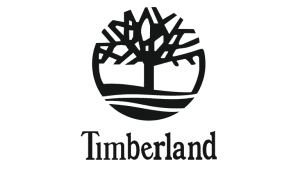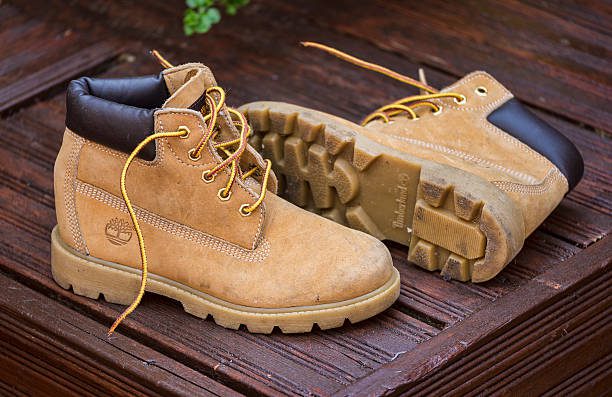
Timberland
boots, brands and beliefs
Summary
Timberland has been making authentic boots, shoes, apparel and accessories since 1973. From humble beginnings in Newmarket, New Hampshire it is now a global company with locations in over fifteen countries and a member of VF Corporation: a global leader in branded lifestyle apparel and footwear. VF Corporation is also one of the world’s largest apparel, footwear and accessories companies connecting people to the lifestyles, activities and experiences they cherish most through iconic outdoor, active and workwear brands including Vans®, The North Face®, Timberland® and Dickies®. it’s overarching purpose is to power movements of sustainable and active lifestyles for the betterment of people and planet.
History
In 1952, shoemaker Nathan Swartz bought half-interest in Abington Shoe Company, acquired remaining shares a few years later, and brought his sons Sidney and Herman on board. The family- owned company handcrafted and sold footwear to discount outlets and stores that put house labels on them. In 1965, as a substitute to costly hand-stitched soles and uppers, the company purchased a injection-moulding machine that chemically moulds and attaches soles to uppers. During this time, the logo evolved as a tree, symbolic of footwear made for rugged terrain.
In 1968 Nathan retired and left the reins with his sons. Two years later, the company moved to New Hampshire and handcrafted water resistant boots that were capable of withstanding extreme weather, of the region, and began marketing it under the name ‘Timberland’ in 1973. The full-grain nubuck leather boots with sealed seams, four-row stitching and injection-moulded soles bonded to the top of the boot ensured it was totally waterproof and the only evolution over time is an anti-fatigue footbed that provides shock absorption.
The brothers then advertised in the New Yorker and consequently the boots were a hit with high-end retailers Bergdorf Goodman and Saks Fifth Avenue. In 1975, sales reportedly reached the million-dollar mark. Herman and Sidney renamed Abington Shoe Company as ‘Timberland‘ in 1978. The following year Giuseppe Veronesi ordered three thousand pairs. Veronesi, President of Ritz Firma — subsidiary of FinRitz SpA — sold these boots in boutiques across Italy.
It was a hit! In 1984, American apparel and footwear company VF Corporation was the first to approach Timberland for an acquisition priced at $60 million but was turned down. Soon Timberland began shipping to France, Germany, Hong Kong, Switzerland and Turkey and worldwide sales hit $68 million. In 1986, they got another buyout bid of $60 million. Herman was for the deal, Sidney against it. To reach an agreement, Sidney bought Herman’s share of Timberland and became Chairman, President and CEO. His son joined the company as Head of International Sales.
Meanwhile Timberland’s expansion growth continued. However, the factories were unprepared for an increase in the product line to five hundred and inventory control and customer service suffered. Despite sales reaching $85 million, profits fell by 14 per cent. In 1988 Timberland entered the clothing and accessories market with stylish apparel designed to perform under extreme conditions. Despite brisk sales, the profit margin continued to erode; the company had too many products, too little focus.
Sidney and his son set out to regain control of their product line and stopped trying to capture disparate markets—the fashion elite and the outdoor crowd. They stepped up advertising to outdoorsy folk which its rugged footwear was originally designed for. Integrating its marketing strategies, Timberland re-emphasised its commitment to people interested in hiking, climbing, camping and adventure travel and shone the spotlight on environmental protection by backing Wilderness Society, City Year and Alaska’s Iditarod Dogsled Race.
What began as a request from City Year for fifty pairs of boots turned into a $1 million investment by 1992, enabling the company to expand further. In 1992, print and media gambits carried the company logo and a social message, ‘Give Racism The Boot’. The campaign fuelled company growth. To maintain its lead in footwear and apparel, Timberland equipped its factories with the latest technology. In 1998 Jeffrey Swartz was named President and CEO of Timberland. The following year, Timberland introduced sub-brands: Mountain Athletics and Timberland PRO. Mountain Athletics was performance footwear while Timberland PRO was a line of work boots with waterproofing, insulation, steel toe, slip resistance and protection from electrical hazards.
Timberland’s growth peaked in 2000 when sales reportedly rose to $1 billion. The company had evolved from a manufacturer of sturdy boots to a titan of rugged outdoor footwear that redesigned its iconic yellow boots in collaboration with brands Vetements, Louis Vuitton, Heron Preston and Off-White. In 2011, Jeffrey Swartz oversaw the sale of Timberland to VF Corporation for $2 billion.
In 2019, Timberland hired British designer Christopher Raeburn as Global Creative Director. Craftsmanship, creativity and utility is central to his design aesthetic, a natural authentic synergy with Timberland. Per GQ, he said, “Timberland is a brand that I grew up with and has been long known for its responsible approach to design, so to have the opportunity to work with such an established and well-respected company is a great honour.”
Vision
The core team’s purpose is also to power movements of sustainable and active lifestyles for the betterment of people and planet. At the heart of Timberland’s story is a community – several communities – stepping outside, to work hard together and move the world forward. With a grit and relentless dedication to problem solving, these bold doers embrace the adventures on their path. And a commitment to equip and inspire the world to step outside, work together and make it better by engaging consumers in the journey to support underserved communities not just in the U.S. but around the world.
Mission
To make the most durable, water-resistant boots meant to be worn in rugged terrain.
Awards and recognition
At Timberland, the company’s mission is to equip people to improve their world by creating outstanding products and making a difference in the communities. the brand is recognised worldwide for retailing products with this mission in mind.
Leadership Team
Stewart Whitney (CEO and President)
Martino Scabbia Guerrini (Executive Vice President)
Kevin D. Bailey (Global Brand President)
Matthew H. Puckett (EVP and Chief Financial Officer)
References
- Official website Timberland
- How The Timberland Boot Became A Cultural Icon Mr. Porter
- Brand profile Timberland
- Jimmy Choo and Timberland’s Sparkly Collab Marie Claire
- The New High-Fashion Sneaker GQ
- VF Corporation to Buy Timberland NY Times
- Christopher Raeburn Wikipedia
- Timberland Blazes A New Trail Forbes
- Nathan Swartz Wikipedia
- Nathan Swartz Russian Heritage Museum
- Jeffrey Swartz Wikipedia
- The 10 Best Timberland Collaborations Complex
- Twitter profile of Timberland Twitter
- Meet the Jewish Billionaire Who Studies Torah Haaretz
- LinkedIn profile of Timberland LinkedIn
- Swartz speaks about Timberland sale Footwear News
- Youtube channel of Timberland Youtube
- Sole Success Inc.
- 20 things you didn’t know about Timberland Money Inc.
- How hip hop helped make Timberland a billion-dollar company CNBC




